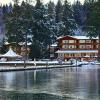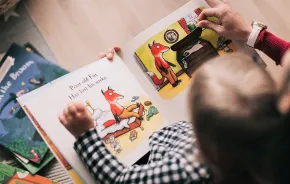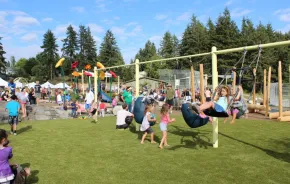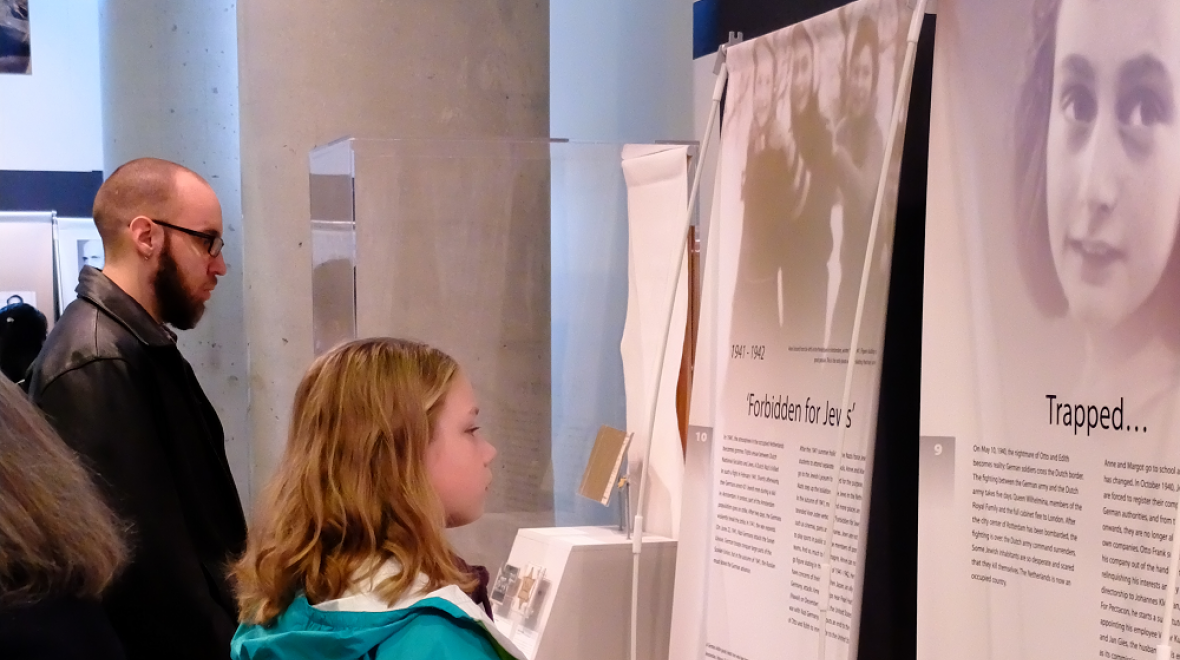
Photo:
'Let Me Be Myself: The Life Story of Anne Frank' exhibit. Courtesy Holocaust Center for Humanity
Two-thirds of the Jewish population of Europe was systematically murdered between 1941 and 1945. Anne Frank’s own experiences — she and her family were refugees, subjected to discriminatory laws, lived in hiding and died in concentration camps — represent those of so many who lost their lives.
The now-famous diary that Anne Frank kept both put a human face on incomprehensible genocide — and also revealed an ordinary kid: A girl frustrated at not being able to go ice skating, dreaming of becoming a writer, crushing on a boy. The exhibition "Let Me Be Myself: The Life Story of Anne Frank," hosted at Seattle's Holocaust Center for Humanity, presents Anne’s life to a young audience with a new chapter that explicitly connects her story to issues of identity, exclusion and discrimination in today’s world.
The centerpiece of the exhibition is a 30-minute documentary that shows the story of Anne Frank from her birth in 1929 to her death in a concentration camp in 1945, nine months after D-Day. Using historical footage and narrated by Jeremy Irons, the film provides context for the events of Anne’s life, explaining the rise of Hitler, the persecution of Jews and the course of the Second World War. Despite the painful facts and potentially disturbing images of the dead and dying, the film is aimed at a young audience. The language is simple and direct, and largely presented from Anne’s point of view. My 9-year-old said it made her feel like she was Anne Frank.
My 9-year-old said it made her feel like she was Anne Frank.
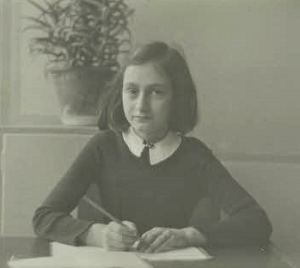
In the exhibit there is a model of the annex where the Frank family hid for two years, a replica of the diary where you can see Anne’s handwriting and display cases with artifacts from the era. But the bulk of the exhibition uses large printed panels. The top of each panel contains personal pictures of Anne Frank and her family; the bottom contains historical photographs that demonstrate events of the time. In the middle, text explains the connection between the two.
The concluding section of the exhibition is dedicated to stories of young people today. The visitors get to know how these youngsters see themselves, but also see the labels strangers apply to them. Their examples show how prejudice can lead to exclusion and discrimination even in today’s world. Text on one panel declares, “Prejudices are just thoughts in our heads.” With the directness necessary for a child audience, the message of the exhibit is that it is natural for everyone to have prejudices, but those thoughts become harmful when they tell us how to act. Everyone has a duty to recognize their own prejudices and make the choice not to act on them.
Parents should know
Due to the heavy subject matter, some graphic images in the film and the text-heavy exhibition materials, this exhibition is recommended for fifth grade and older. Don’t feel like you must find childcare for younger siblings, though. My daughter felt the more graphic images in the film were less frightening because they were grainy and black and white. There is a table of reproduction artifacts that children can touch, a scavenger hunt that can keep school-age kids busy long enough for adults to read most of the panels, and a reading room filled with books for all ages. (Books can be checked out, too.)
Most importantly, the knowledgeable docents are welcoming and friendly to children. They treated my daughter like every other patron, speaking to her directly and offering age-appropriate answers to her questions.
My daughter, accustomed to active shooter drills and sheltering in place at school, was less affected by the security at the Holocaust Center for Humanity than I was. To me, the security procedures were as powerful a reminder as anything inside the exhibit that Anne Frank’s story is as relevant today as it was in her time. Reservations are required, and when you arrive you must ring the doorbell and be let in by a security guard. The guard confirms your reservation before letting you pass through the lobby through another locked door into the museum. Weapons of any kind are absolutely prohibited.
If you go...Where: Find the Holocaust Center for Humanity on the corner of Second Avenue and Lenora in downtown Seattle at 2045 Second Ave., Seattle When: The Anne Frank exhibit is on view Wednesdays and Sundays, 10 a.m.–4 p.m., through May 30. The last available admission is at 3:30 p.m. and reservations are required. Cost: The suggested admission donation is $10 per adult and $5 for students or seniors. Advance reservations for a specific date and morning or afternoon arrival are required. Parking: The Center recommends the paid public parking garage at Tower 12 Apartments. Entrance is via the alley between First and Second Avenues from either Lenora or Virginia. There are other pay lots nearby (prices vary). Street parking is limited. The Center is well-served by transit: Plan your route online. Holocaust Remembrance Day Commemoration: Reserve free tickets for the Center's Yom Hashoah event on Sunday, April 15, to "remember, learn and be inspired." The program is appropriate for ages 11 and older. If you can't make the event, the Center has a list of 15 meaningful ways to commemorate Holocaust Remebrance Day. Field trips: Field trips are available for sixth grade and higher. For field trips, the exhibit is enhanced by guest speakers — local residents who are themselves Holocaust survivors. |







